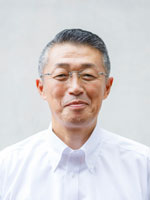Point
We have developed an yttrium-based oxide superconducting wire through which large current can be passed even in a high magnetic field.
 |
Schematic drawing of Metal Organic Deposition Process
(which repeats material solution coating and thermal treatment many times) |
Background
Superconducting wires capable of keeping high performance, even in a magnetic field, are required for superconducting magnets of equipment used under high magnetic field environment, such as motors, electric generators, medical equipment including MRIs and heavy particle accelerators. Meanwhile, magnetic flux lines penetrating into a superconducting conductor are moved by the Lorentz force generated by the interaction between the magnetic field and the current. As a result, voltage is generated to cause electrical resistance, thus reducing superconducting characteristics. Methods for suppressing the movement of magnetic flux include one using an artificial pinning effect (by creating defects in crystals). However, such a method is still insufficient in terms of particle size and uniform dispersion of artificial pinning points.
Outcomes and Methods
We have succeeded in improving the characteristics of an yttrium-based oxide superconducting wire in a magnetic field by reducing artificial pinning points to an ultraminiature size and uniformly dispersing them at a high concentration utilizing a metal organic deposition process, which is low in cost as compared with vapor phase methods. As a result, a maximum density of current that can flow while keeping a superconducting state, namely a maximum critical current density of 4 million amperes (per square centimeter, at a liquid nitrogen temperature, 65 K, in a magnetic field of 3 T) has been achieved, and a critical current value has also exceeded 360 amperes.
Future Plan
SWCC Showa Holdings Co., Ltd. is planning to develop products on the basis of these results. AIST and Seikei University will continue conducting development to enhance performance and provide support for the product development.
These results are expected to be expanded to superconducting generators, superconducting motors, superconducting cables, etc. in electric propulsion systems for airplanes.
Links
Contact
 |
|
Teruo Izumi
Senior Researcher
Research Institute for Energy Conservation
1-2-1 Namiki, Tsukuba, Ibaraki 305-8564 Japan
E-mail: ieco-info-ml*aist.go.jp (Please convert "*" to "@".)
|